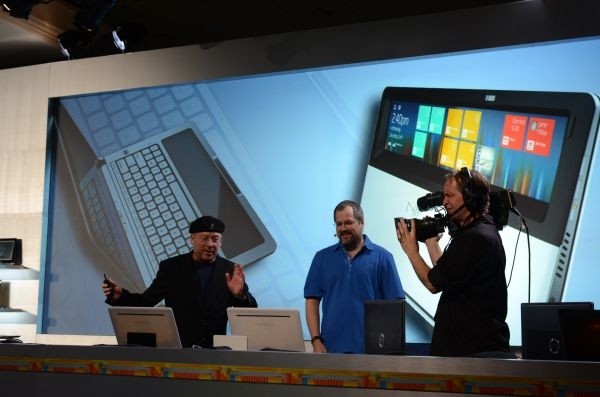Intel's Shmuel "Mooly" Eden took the stage today at the company's CES 2012 press conference to discuss Ultrabooks and a handful of features that should move the category forward. Among other things, the excecutive boasted over 75 different ultrabook designs would be coming in 2012 – 50 percent of those in 14- and 15-inch sizes – and said many of those would come in below the standard $1,000 price point.
Besides showing off a few demonstration units on stage, Eden talked up some of the capabilities of their next generation Ivy Bridge microprocessors, which will bring much-improved graphics performance and support for NFC payments. He wouldn't disclose any specific details about the upcoming parts besides mentioning up to 70% gains in graphics performance and a 20% reduction in power draw compared to Sandy Bridge.
A couple of live demos were run to back those claims where Intel executives compressed a photo album of 100 photos in a matter of seconds and edited some animations in real-time. Regarding the newly-announced NFC capabilities of Ivy Bridge, Eden touted the platform's security by saying an individual credit card can be assigned to a specific notebook. If the credit card is lost or stolen, it won't work with another notebook.

Mooly Eden demos the Nikiski concept PC (source: AnadTech)
Looking ahead, Eden said future Ultrabook models will get multitouch displays to complement keyboard input and push their functionality to a new level. At the same time he took a jab a tablets – a market it hasn't been able to break into – by saying Ultrabooks are full-on computers and not just consumption devices. "Consumption is good for cows; we are humans; all of us would like to express ourselves," he said.
Intel also announced a partnership with Nuance to bring speech recognition to ultrabooks later this year and briefly demonstrated a few other concepts we may or may not see in Ultrabooks at some point in the future, including Kinect-like gesture controls and a laptop codenamed Nikiski, which has a transparent touchpad accross the bottom edge of the the machine that can display basic laptop data when the lid is closed.